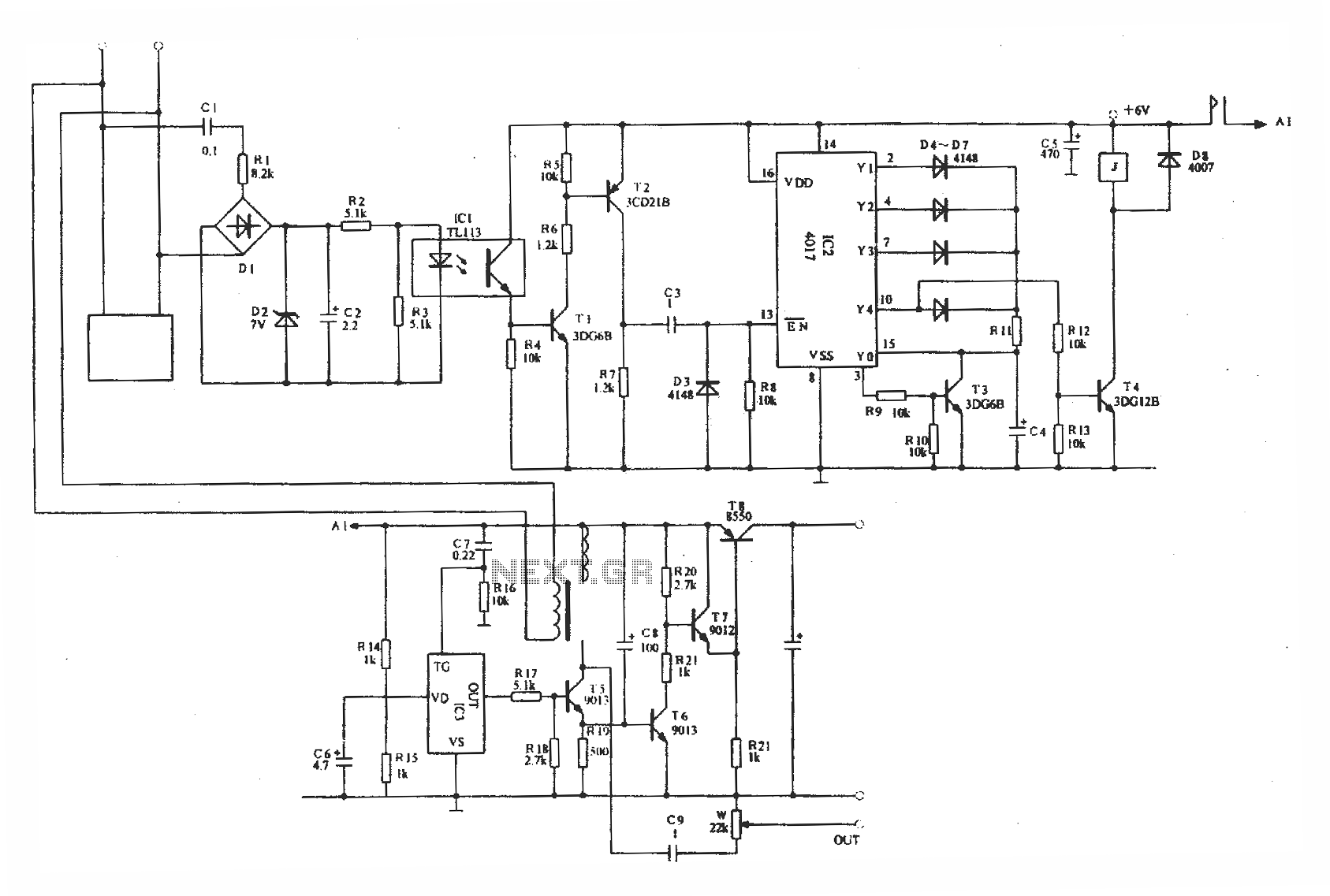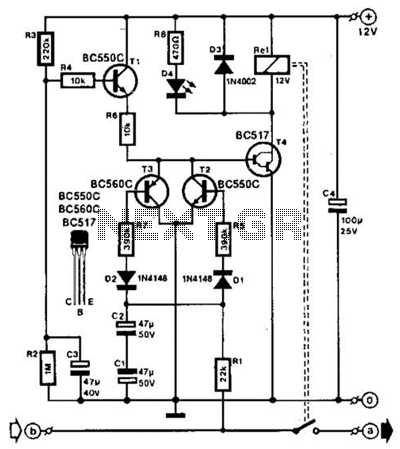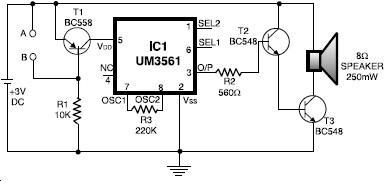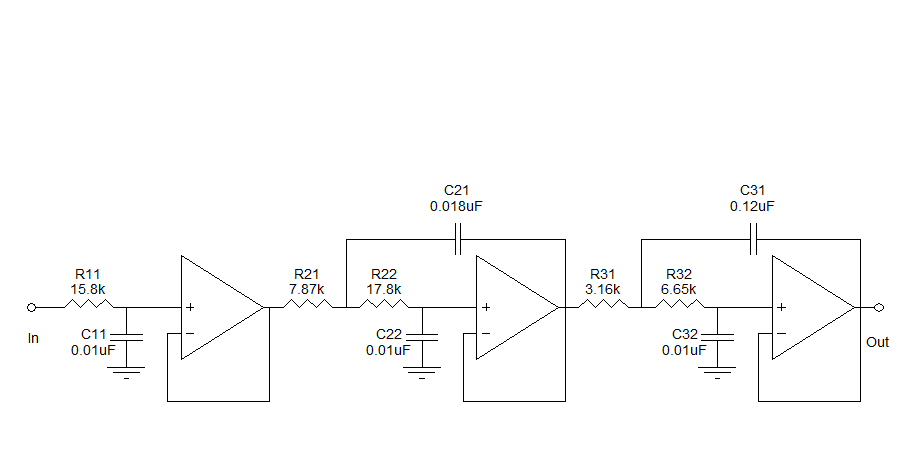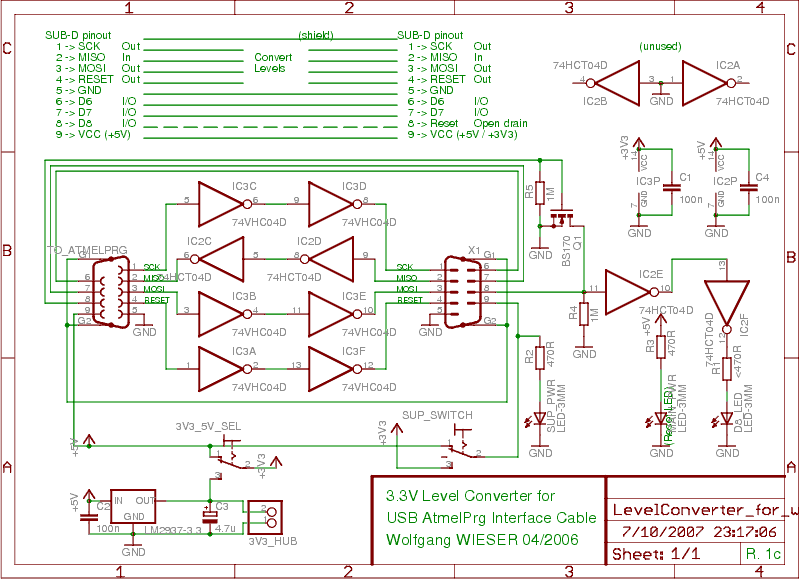
Frequency to Voltage Converter Circuit Schematic Diagram
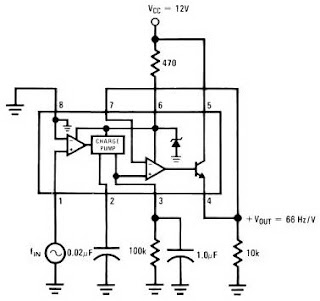
The LM2917 IC chip is specifically designed as a Frequency to Voltage Converter. It requires only a few external components for its operation. The datasheet for the LM2917 IC includes several application examples of the Frequency to Voltage Converter. The advantages of using the single-chip LM2917 include its ability to provide an instantaneous voltage output at the moment of frequency change, even at 0 Hz. It is straightforward to use for measuring output frequency, with the formulation for a single-chip Frequency to Voltage Converter being VOUT = FIN x VCC x R1 x C1. This configuration necessitates only the RC components for frequency doubling and features an internal Zener regulator to ensure accuracy and stability during the frequency-to-voltage conversion process.
The LM2917 Frequency to Voltage Converter is an integrated circuit that effectively translates frequency variations into corresponding voltage levels. This capability is particularly useful in applications where frequency signals need to be monitored and converted for further processing or display. The LM2917 operates by generating a voltage output that is directly proportional to the input frequency, which can be calculated using the formula VOUT = FIN x VCC x R1 x C1, where FIN is the input frequency, VCC is the supply voltage, R1 is the resistance, and C1 is the capacitance.
In practical applications, the LM2917 can be utilized in various systems, including frequency measurement devices, tachometers, and signal processing circuits. The simplicity of the circuit design, requiring only a few passive components, makes it an attractive choice for engineers looking to implement frequency-to-voltage conversion without extensive additional circuitry. The internal Zener regulator enhances the performance by providing a stable reference voltage, which contributes to the overall accuracy of the conversion process.
For additional functionality, the LM2917 can be configured for frequency doubling, which can be advantageous in applications where increased output voltage levels are necessary. This feature further simplifies the design, as only the RC components need to be adjusted for different frequency ranges. Overall, the LM2917 is a versatile and efficient solution for frequency-to-voltage conversion in a wide range of electronic applications.IC LM2917 IC chip is designed specifically as a Frequency to Voltage Converter or Frequency to Voltage converter. In its use to applications Frequency to Voltage Converter IC LM2917 requires few external components.
There are several examples of applications of Frequency to Voltage Converter IC LM2917 datasheet that is included in the LM2917 IC. I n this article series Frequency to Voltage Converter IC also taken from the LM2917 datasheet. The advantages of single chip LM2917 Frequency to Voltage Converter is able to provide instantaneous volt output o at time of frequency change 0 Hz. Very easy to apply in measuring the output frequency with the formulation of single-chip Frequency to Voltage Converter VOUT = FIN x VCC x R1 x C1.
Then the single-chip LM2917 Frequency to Voltage Converter This configuration requires only the RC only in frequency doubling. And has an internal zener regulator to aimlessly accuracy and stability in frequency-to-voltage conversion process.
🔗 External reference
The LM2917 Frequency to Voltage Converter is an integrated circuit that effectively translates frequency variations into corresponding voltage levels. This capability is particularly useful in applications where frequency signals need to be monitored and converted for further processing or display. The LM2917 operates by generating a voltage output that is directly proportional to the input frequency, which can be calculated using the formula VOUT = FIN x VCC x R1 x C1, where FIN is the input frequency, VCC is the supply voltage, R1 is the resistance, and C1 is the capacitance.
In practical applications, the LM2917 can be utilized in various systems, including frequency measurement devices, tachometers, and signal processing circuits. The simplicity of the circuit design, requiring only a few passive components, makes it an attractive choice for engineers looking to implement frequency-to-voltage conversion without extensive additional circuitry. The internal Zener regulator enhances the performance by providing a stable reference voltage, which contributes to the overall accuracy of the conversion process.
For additional functionality, the LM2917 can be configured for frequency doubling, which can be advantageous in applications where increased output voltage levels are necessary. This feature further simplifies the design, as only the RC components need to be adjusted for different frequency ranges. Overall, the LM2917 is a versatile and efficient solution for frequency-to-voltage conversion in a wide range of electronic applications.IC LM2917 IC chip is designed specifically as a Frequency to Voltage Converter or Frequency to Voltage converter. In its use to applications Frequency to Voltage Converter IC LM2917 requires few external components.
There are several examples of applications of Frequency to Voltage Converter IC LM2917 datasheet that is included in the LM2917 IC. I n this article series Frequency to Voltage Converter IC also taken from the LM2917 datasheet. The advantages of single chip LM2917 Frequency to Voltage Converter is able to provide instantaneous volt output o at time of frequency change 0 Hz. Very easy to apply in measuring the output frequency with the formulation of single-chip Frequency to Voltage Converter VOUT = FIN x VCC x R1 x C1.
Then the single-chip LM2917 Frequency to Voltage Converter This configuration requires only the RC only in frequency doubling. And has an internal zener regulator to aimlessly accuracy and stability in frequency-to-voltage conversion process.
🔗 External reference

